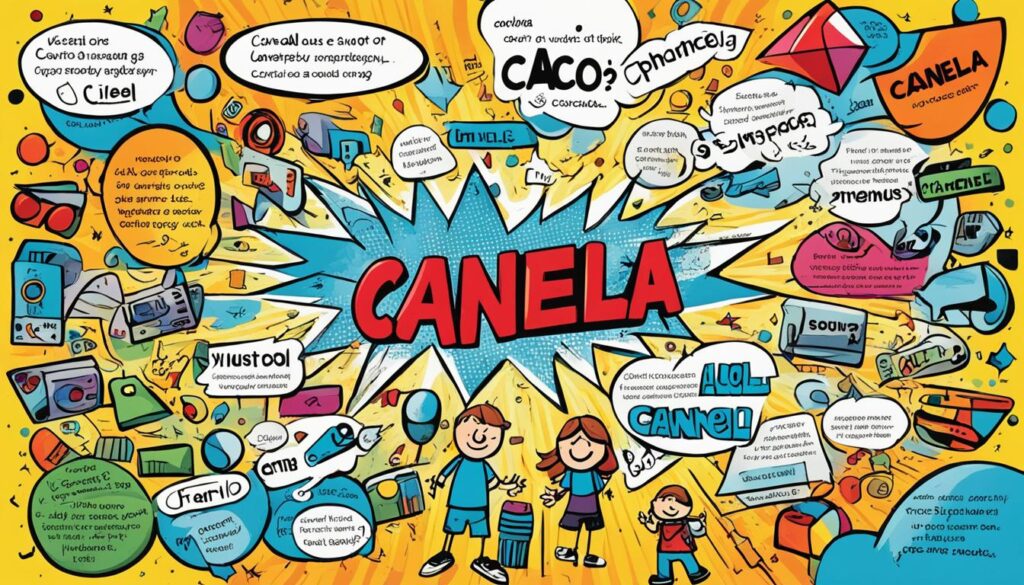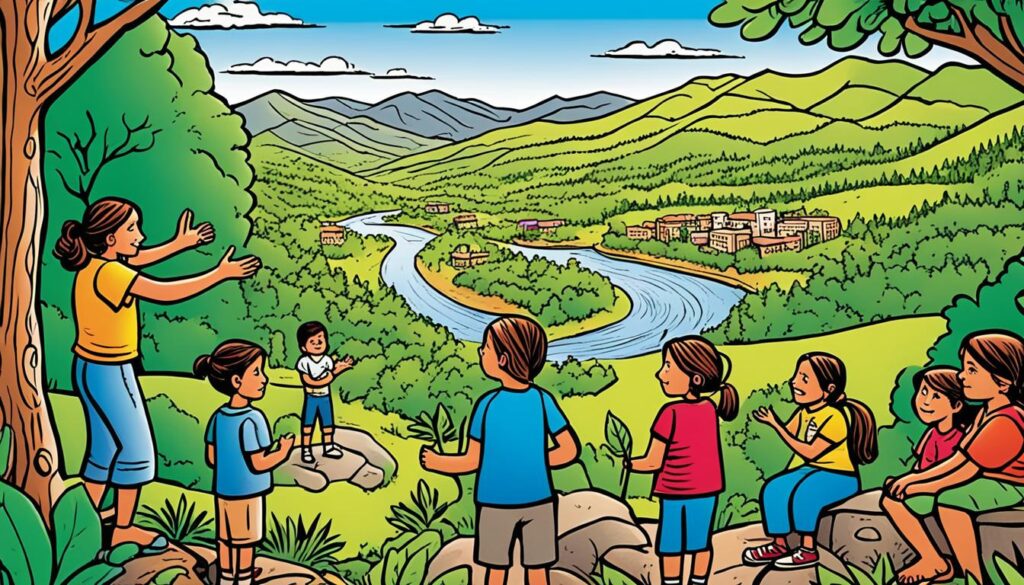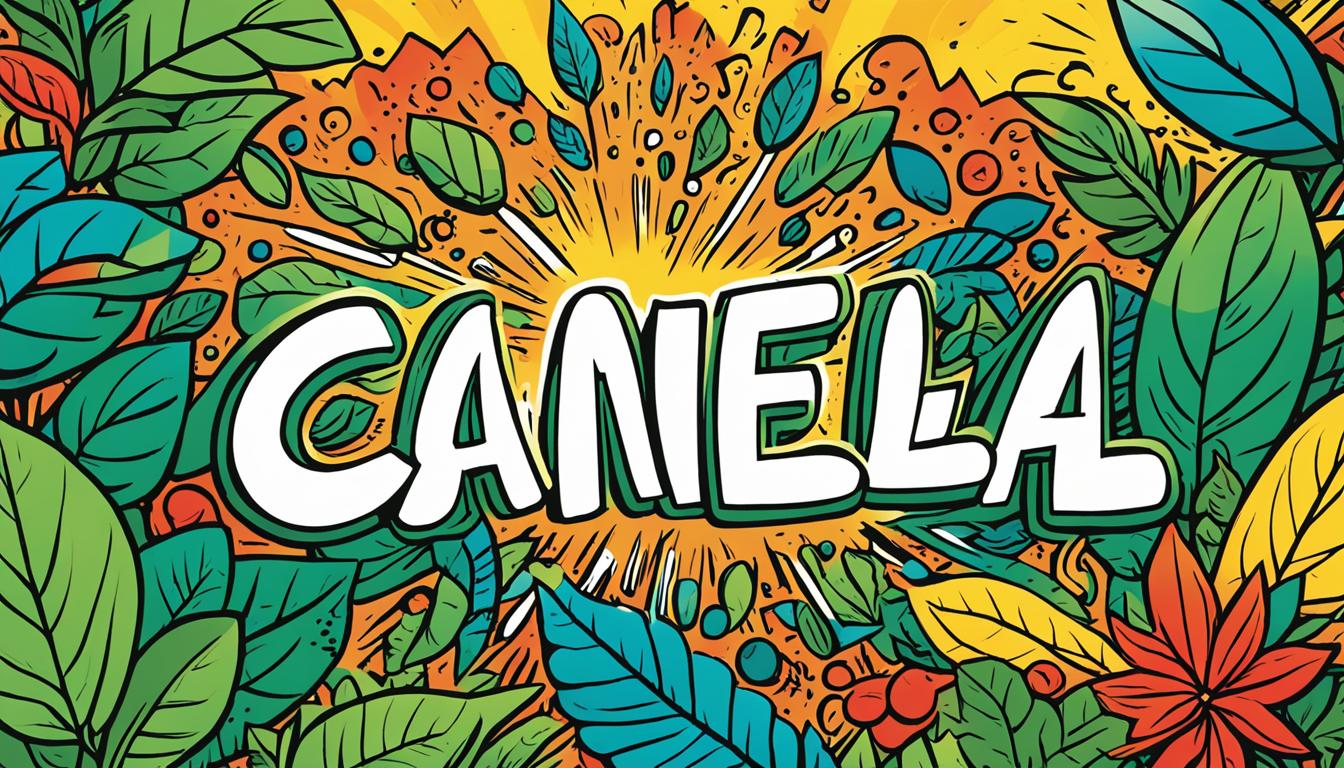Language preservation is of paramount importance in maintaining the rich linguistic diversity of Brazil. The Canela language, also known as the Canela dialect, is an indigenous language spoken by approximately 2,500 people in Maranhão, Brazil. It is part of the Timbira variety of the Northern Jê language group and holds immense cultural significance for the Canela people.
Efforts are underway to revitalize and preserve the Canela language, recognizing its endangered status along with many other indigenous languages in the country. The preservation of the Canela language not only safeguards the cultural heritage of the Canela people but also contributes to the linguistic diversity that makes Brazil truly unique.
History and Cultural Significance of the Canela Language
The Canela language holds great cultural and historical significance for the Canela people. It is an integral part of their identity, representing their unique heritage and ancestral traditions. The language is closely tied to the Canela culture, which includes complex rituals, shamanic practices, and an intricate social organization.
The Canela people have faced challenges in preserving their language due to contact with outside agencies such as Funai, ranchers, and missionaries. However, they continue to seek autonomy in their productive activities and strive to maintain the vitality of their culture.
“The Canela language is not just a means of communication for us; it is our connection to our past, present, and future. It carries the wisdom and knowledge of our ancestors and allows us to preserve our cultural heritage.” – Chief Aritana, Canela community leader
The Canela language serves as a vehicle for expressing the rich cultural traditions, myths, and storytelling of the Canela people. It embodies their worldview, values, and collective memory. Language revitalization efforts have become crucial in ensuring the preservation of the Canela culture and preventing the loss of indigenous languages in Brazil.
Despite the challenges, the Canela people are committed to reclaiming their linguistic heritage and revitalizing the Canela language. Through initiatives focused on language documentation, language classes, and intergenerational language transmission, the Canela community is working towards ensuring the future viability and relevance of their language.
Preserving Cultural Identity Through Language
The Canela language provides a sense of belonging and cultural identity for the Canela people. It is a living testament to their resilience, history, and connection to the land. By preserving and promoting the Canela language, the community affirms its unique cultural values and traditions.
- Language is deeply intertwined with Canela rituals, ceremonies, and artistic expressions, such as music and dance.
- The Canela language’s oral tradition includes myths, legends, and ancestral knowledge that are passed down from generation to generation.
- Language is key to understanding the social organization and kinship systems within the Canela community.
Challenges and Opportunities for Language Revitalization
The Canela language faces various challenges, including linguistic assimilation, limited resources, and the dominance of Portuguese in Brazil. However, there are also opportunities for language revitalization:
- Collaboration with Indigenous language programs: The Canela community actively participates in Indigenous language preservation initiatives and collaborates with organizations dedicated to supporting language revitalization efforts.
- Education and bilingualism: Through bilingual education programs and the inclusion of the Canela language in school curricula, the younger generation has the opportunity to learn and engage with their native language.
Linguistic Characteristics of the Canela Language
The Canela language exhibits unique linguistic characteristics, including its phonology and morphology. Phonologically, it features a diverse range of vowel sounds and distinct consonant patterns. These phonetic elements contribute to the rich and distinctive sound of the language.
In terms of morphology, the Canela language showcases a phenomenon known as finiteness morphology. Verbs in Canela undergo inflection to indicate their finiteness in matrix clauses. This grammatical feature plays a crucial role in expressing various aspects of tense, mood, and aspect within the language’s sentence structure.
Furthermore, the morphosyntactic alignment in the Canela language varies depending on the clause type. It exhibits split-S, ergative-absolutive, and nominative-absolutive patterns. These patterns dictate the alignment and marking of subjects and objects in sentences, contributing to the overall syntactic structure of the language.
The Canela language encompasses different classes of predicates, including transitive verbs, canonical intransitive verbs, descriptives, and verba sentiendi. Each class serves a unique grammatical function within sentences, allowing for diverse expression and nuanced communication.
Example:
“Ngasen kawyit ne wama.” (The boy sees the cat)
In this example, ngasen represents a transitive verb, while wama functions as an object within the sentence. These predicates and their associated classes form the building blocks of the Canela language’s syntax and semantic structure.
| Phonology | Finiteness Morphology | Morphosyntactic Alignment | Classes of Predicates |
|---|---|---|---|
| Unique vowel sounds and consonant patterns | Verbal inflection for finiteness in matrix clauses | Split-S, ergative-absolutive, and nominative-absolutive patterns | Transitive verbs, canonical intransitive verbs, descriptives, and verba sentiendi |
The linguistic characteristics of the Canela language, including its phonology, morphology, morphosyntactic alignment, and classes of predicates, contribute to its rich and complex linguistic structure. These elements shape the way the Canela people communicate, express their ideas, and convey their cultural identity through language.

Language Variation and Contact Influences on the Canela Language
The Canela language, like many indigenous languages, has experienced language variation and contact influences throughout its history. These influences have shaped and impacted the language, contributing to its current state and usage. One significant aspect of language variation within the Canela language is the interaction between different dialects spoken by various groups within the Canela community.
For instance, the Canela dialect spoken by the Ramkokamekrá group has been influenced by the Apanyekrá dialect, and vice versa. This interdialectal contact has resulted in linguistic changes and adaptations between the two dialects. As a result, certain linguistic features and vocabulary may vary between the different Canela dialects, highlighting the dynamic nature of language within the Canela community.
“The interaction between different Canela dialects has contributed to language variation, showcasing the rich linguistic diversity within the Canela community.”
Furthermore, contact with the Portuguese language has played a significant role in shaping the Canela language. Portuguese, as the dominant language in Brazil, has inevitably influenced the lexicon and grammar of the Canela language. Loanwords from Portuguese have been incorporated into the Canela vocabulary, enriching the language with new terms and concepts.
The influence of Portuguese extends beyond vocabulary, as grammatical structures and language use have also been affected. Cultural assimilation and contact with Portuguese-speaking communities have resulted in shifts in language use and cultural practices among the Canela people. However, it is important to note that the Canela language still retains its unique linguistic features and continues to be a symbol of cultural identity and heritage.
“The Portuguese influence on the Canela language highlights the cultural assimilation and shifts in language use that have occurred over time.”
To better understand the contact influences and language variation within the Canela language, a comprehensive analysis of the lexical and grammatical changes is required. The following table provides an overview of some key language variations influenced by contact with different languages:
| Contact Influence | Language Variation |
|---|---|
| Apanyekrá dialect | Influence on Ramkokamekrá group |
| Ramkokamekrá dialect | Influence on Apanyekrá group |
| Portuguese language | Vocabulary enrichment, grammatical influence |
This table illustrates how contact influences have led to language variations within the Canela community. It highlights the interconnectedness of the Canela language with other dialects within the community and the impact of Portuguese on the language. By understanding these contact influences and variations, we gain valuable insights into the dynamic nature of the Canela language and its adaptation to external linguistic influences.
Current Language Revitalization Efforts for the Canela Language
In recent years, significant efforts have been made to revitalize and preserve the Canela language, ensuring its continued use and vitality for future generations. Various indigenous language programs and cultural preservation initiatives have been established to support the revitalization of the Canela language and promote its use among the younger generations.
These initiatives prioritize language documentation, aiming to preserve and document the unique features of the Canela language. Linguists and community members collaborate to record and analyze the phonology, morphology, and syntax of the language, contributing to a comprehensive understanding of its linguistic structure.
Additionally, these programs focus on developing teaching materials specifically tailored to the Canela language, facilitating language learning and usage. Educational resources such as textbooks, dictionaries, and interactive materials help learners acquire and practice the language’s vocabulary and grammar.
Cultural Preservation Initiatives
Cultural preservation initiatives play a crucial role in language revitalization efforts. Recognizing the intrinsic link between language and culture, these initiatives promote activities that foster the Canela community’s cultural identity and linguistic heritage.
“Language preservation is not merely about saving words and grammar structures; it is about preserving an entire way of life and a profound connection to our ancestors.”
– Ana Silva, Canela community leader
Language revitalization activities include cultural events, workshops, and gatherings where community members engage in traditional practices, storytelling, and music using the Canela language. These events create an immersive environment for language learning and reinforce the connection between language and cultural identity.
The Canela community places great importance on intergenerational language transmission. Elders and fluent speakers take on the role of language mentors, passing down their knowledge and fluency to younger members of the community. This intergenerational exchange helps maintain the continuity of the language and ensures its transmission to future generations.
Language Documentation
Efforts in language documentation are crucial for providing comprehensive resources and references for the Canela language. Linguists work closely with the community to gather and analyze linguistic data, which includes phonetic transcriptions, morphological analyses, and grammatical descriptions.
The documentation process involves systematic recording of oral narratives, conversations, and traditional knowledge shared by fluent speakers. This data serves as a valuable linguistic and cultural resource for researchers, linguists, and the Canela community itself.
Language documentation provides a foundation for language revitalization efforts, ensuring that future generations have access to accurate and detailed information about the Canela language’s structure and usage.
Overview of Current Language Revitalization Efforts
| Initiative | Description |
|---|---|
| Indigenous Language Programs | Establishment of language learning programs, workshops, and immersion experiences to promote proficiency in the Canela language. |
| Cultural Preservation Events | Organizing community events, festivals, and gatherings that celebrate Canela culture and encourage language use. |
| Curriculum Development | Creating educational materials, textbooks, and multimedia resources tailored to the Canela language. |
| Intergenerational Language Transmission | Facilitating mentorship programs where fluent speakers mentor younger community members in the Canela language. |
| Documentation and Research | Collaborating with linguists and researchers to document and analyze the linguistic features of the Canela language. |
The combination of these language revitalization efforts, indigenous language programs, cultural preservation initiatives, and language documentation contribute to the preservation and revitalization of the Canela language. These endeavors ensure that the Canela language remains a vibrant and integral part of the Canela community’s cultural heritage, safeguarding its linguistic diversity for future generations.

Conclusion
The Canela language, spoken by the Canela people in Maranhão, Brazil, is a crucial part of their cultural identity and contributes to the linguistic diversity of the country. Despite the challenges of language contact and cultural assimilation, efforts are underway to preserve and revitalize the Canela language and ensure the continuity of indigenous languages in Brazil.
Preserving indigenous languages like Canela is essential in safeguarding diverse cultural heritage and promoting linguistic diversity. These languages are a testament to the rich tapestry of Brazil’s linguistic landscape and play a vital role in maintaining the unique cultural identities of indigenous communities.
By supporting initiatives for language revitalization and cultural preservation, we can help the Canela language thrive and continue to be a source of pride for the Canela people. Such efforts not only strengthen the cultural fabric of indigenous communities but also contribute to preserving the linguistic heritage of Brazil for future generations to appreciate and celebrate.
FAQ
How many people speak the Canela language?
Approximately 2,500 people speak the Canela language.
What language group does the Canela language belong to?
The Canela language belongs to the Timbira variety of the Northern Jê language group.
Why is the Canela language considered endangered?
The Canela language, along with many other indigenous languages in Brazil, is considered endangered due to a decrease in the number of speakers and the influence of outside agencies.
What cultural significance does the Canela language hold for the Canela people?
The Canela language is an integral part of the Canela people’s identity, representing their unique heritage and ancestral traditions.
What are the linguistic characteristics of the Canela language?
The Canela language has unique phonological and morphological features, including vowel sounds, consonant patterns, and finiteness morphology.
How has the Canela language been influenced by other languages?
The Canela language has been influenced by contact with other languages, including the Apanyekrá dialect and Portuguese.
What efforts are being made to revitalize the Canela language?
Indigenous language programs and cultural preservation initiatives have been established to support the revitalization of the Canela language and promote its use among younger generations.
Why is it important to preserve the Canela language?
Preserving the Canela language is crucial for preserving the cultural identity of the Canela people and promoting linguistic diversity in Brazil.
